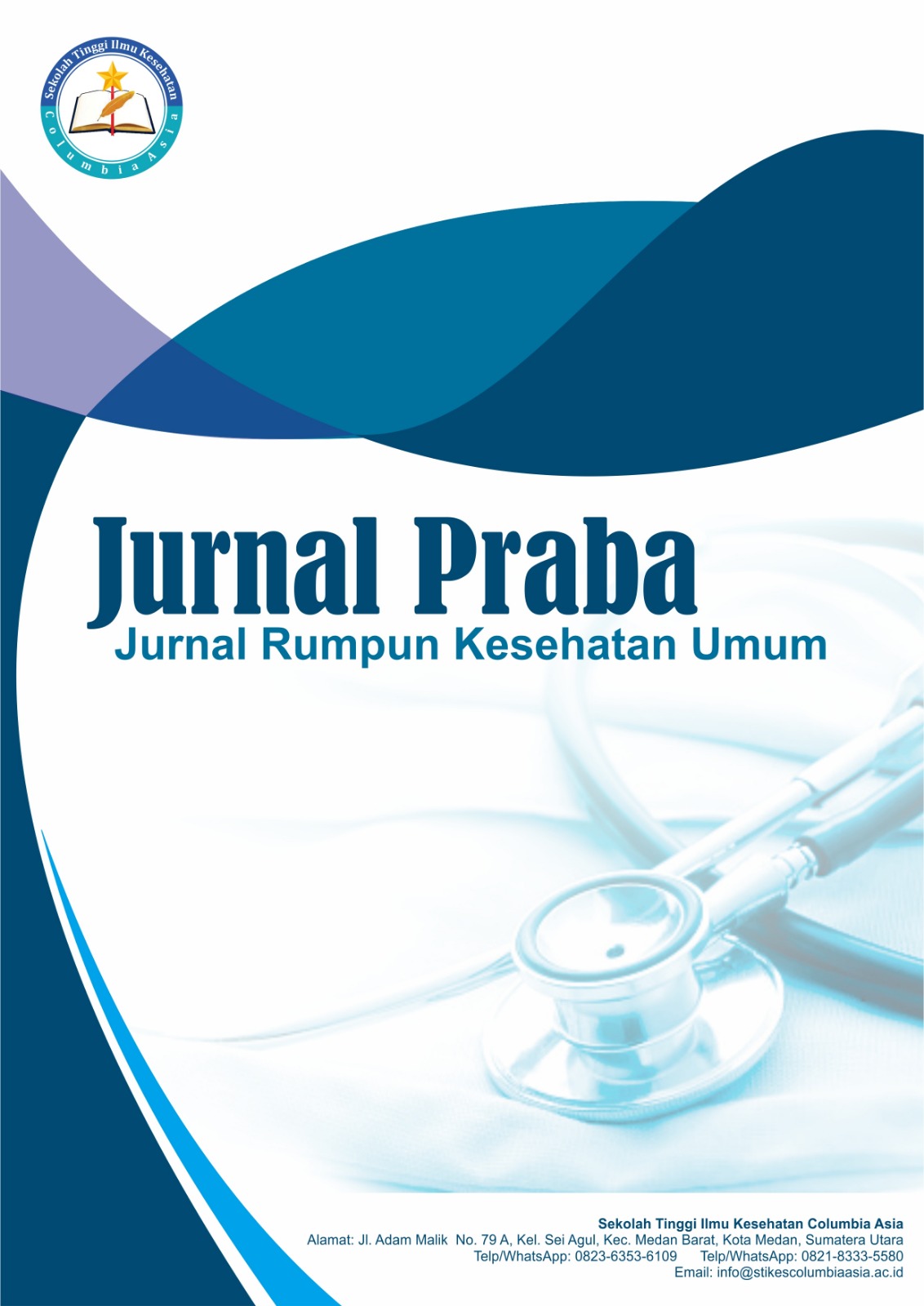Resusitasi Cairan pada Pasien dengan Syok Hipovolemik
DOI:
https://doi.org/10.62027/praba.v3i2.374Keywords:
Fluid resuscitation, Hypovolemic shock, Rapid responseAbstract
Hypovolemic shock is a condition of reduced organ perfusion and oxygenation to tissues caused by acute loss of blood (hemorrhagic shock) or body fluids (non-hemorrhagic) which can be caused by various circumstances resulting in multiorgan failure. The mortality rate in injured patients who experience hypovolemic shock in clinics with a total care level reaches 6%. Relevant articles were searched through an electronic database, Google Scholar, using the keywords “Fluid Resuscitation in Patients with Hypovolemic Shock”. The treatment to prevent hypovolemic shock is fluid resuscitation. The classic symptoms of shock are, blood pressure decreases dramatically and is not stable even though the position is lying down, the patient suffers from severe tachycardia, oliguria, agitation or confusion, increased sympathetic work, hyperventilation, collapsed veins, release of stress hormones and large expansion to fill the volume of blood vessels using interstitial fluid, intercellular fluid and reduce urine production. Management of hypovolemic shock due to fixed bleeding begins with an assessment of airway, breathing, circulation, diability and exposure. Then after initial management, the response is evaluated, which can be rapid, temporary, and minimal or no response.
References
Andriati, R., & Trisutrisno, D. (2021). Pengaruh resusitasi cairan terhadap status hemodinamik mean arterial pressure (MAP) pada pasien syok hipovolemik di IGD RSUD Balaraja. Medical Surgical Concerns, 1(1), 1–13.
Arief, M. H. A., & Subekti, B. E. (2023). Tatalaksana syok hipovolemik pada perdarahan akut. Jurnal Penelitian Perawat Profesional, 5(4).
ATLS. (2018). Advanced trauma life support (ATLS) (10th ed.). American College of Surgeons.
Dewi, E., & Rahayu, S. (2019). Kegawatdaruratan syok hipovolemik. Jurnal Berita Ilmu Keperawatan, 2, 93–96. https://doi.org/10.23917/bik.v2i2.37
Hady, A., dkk. (2022). Studi literatur tindakan resusitasi cairan pada pasien perdarahan dengan syok hipovolemik. Jurnal Ilmiah Kesehatan Diagnosis, 17(4), 136–145.
Hooper, N., & Armstrong, T. J. (2022, September 26). Hemorrhagic shock. In StatPearls [Internet]. StatPearls Publishing.
Junaidi, Sargowo, J., & Nasution, T. H. (2016). Shock index (SI) dan mean arterial pressure (MAP) sebagai prediktor kematian pada pasien syok hipovolemik di RSUD Gunung Jati Cirebon. Jurnal Kesehatan Hesti Wira Sakti, 4, 45–59.
Kadafi, K. T. (2019). Resusitasi cairan: Memilih cairan yang tepat pada anak. Salemba Medika.
Nurfadillah, Annisa, & Tahir, M. Y. (2020). Pengelolaan pasien syok hipovolemik dengan pemberian resusitasi cairan. Stikes Panakkukang, 151–156.
Pardede, S. O., dkk. (2020). Tata laksana berbagai keadaan gawat darurat pada anak. Universitas Indonesia.
Rahmawati, I., Dilaruri, A., Sulastyawati, & Supono. (2021). The role of passive legs raising position in hypovolemic shock: A case report and review of the literature. Journal of Nursing Practice, 4(2), 177–184.
Sari, P. D., & Putrono, S. (2019). Pengelolaan pasien syok hipovolemik dengan pemberian resusitasi cairan di IGD RSUD Tugurejo Semarang. Jurnal Kesehatan, 3, 1–9.
Shagana, J. A., Dhanraj, M., Jain, A. R., & Osa, T. N. (2018). Hypovolemic shock – A review. Drug Invention Today, 19(7).
Tafwid, M. I. (2018). Tatalaksana syok hipovolemik et causa suspek intra abdominal hemorrhagic post sectio caesaria. Jurnal Agromed Unila, 2(3), 203–210.
Tarigan, R. G. R. (2021). Literature review: Pengaruh resusitasi cairan pada pasien dengan syok hipovolemik terhadap perubahan hemodinamik.
Downloads
Published
How to Cite
Issue
Section
License
Copyright (c) 2025 Jurnal Praba : Jurnal Rumpun Kesehatan Umum

This work is licensed under a Creative Commons Attribution-ShareAlike 4.0 International License.







